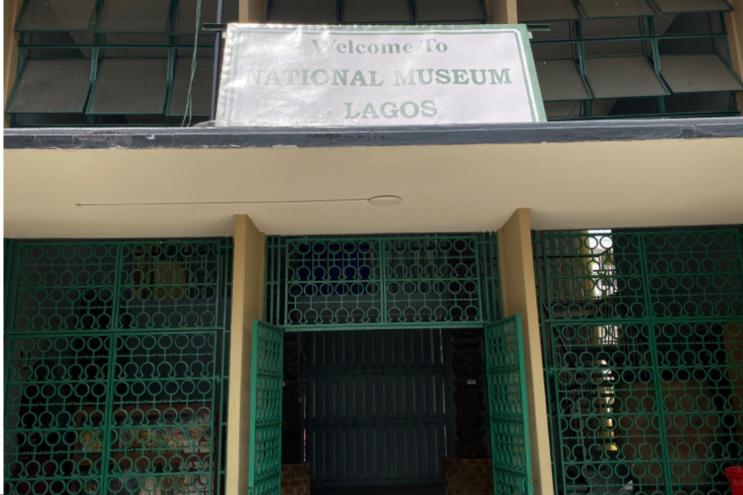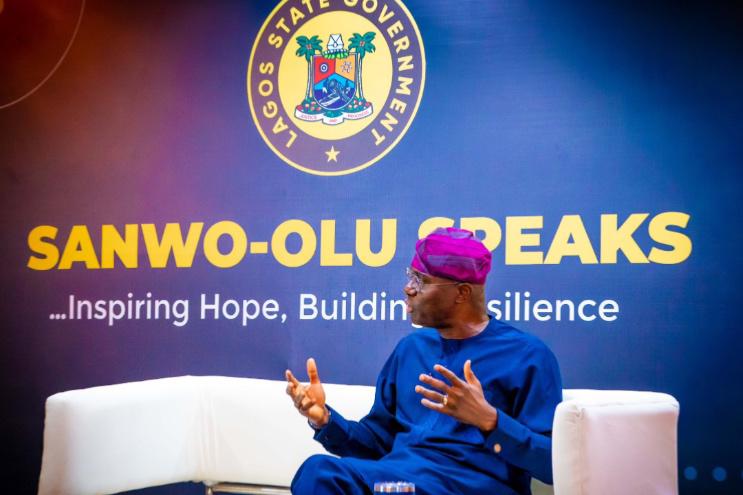Stepping into the Nigerian National Museum vicinity, in Onikan, Lagos, one is struck by the meticulous effort deployed to the facility’s preservation since its establishment in 1957.
The fence is adorned with paintings depicting the seven wonders of Nigeria. Amidst the greenery stood the “Jollof pot on wheels” sculpture, while on the far-right end, there is a children’s park.
This beautiful sight is usually unexpected for a first-time visitor, as many historical sites and tourist attractions in Nigeria are often found in a state of disrepair.
The National Museum in Onikan, Lagos, however, stands as a notable exception. Established by the English archaeologist, Kenneth Murray, it serves as one of Nigeria’s oldest and most esteemed museums. Its primary purpose is to safeguard various historical artefacts, offering a glimpse into the nation’s rich and diverse cultural heritage.
Originally known as the Lagos Museum, the institution was later renamed the National Museum to acknowledge its role as a custodian of Nigeria’s history and culture.
Ticketing
The ticket prices for visiting the museum are quite reasonable. Children and young adults (undergraduates) are charged N500, while adults and foreign children pay N1000 for entrance. Foreign adults, however, are charged N2000. The discrepancy in ticket prices between Nigerians and foreigners raises some questions but one would want to believe that it is some strategy to earn more from tourism.
As you step into the museum’s reception area, a journey through Nigeria’s history and culture unfolds before your eyes. Two tall wooden Obu house posts, intricately carved in relief from Asaga Ohafia in Abia state, stand prominently in the centre. To the right, near the staircase, sits a large clay traditional pot.
During my visit, I was surprised to find no tour guide available to lead visitors around the museum. It seems that tour guides are typically reserved for groups or schoolchildren. Instead, I was instructed by the museum staff to explore on my own. However, I soon discovered that each artefact and sculpture in the museum is accompanied by detailed descriptions, allowing visitors to learn more about them as they explore independently.
Rich collection of artworks
The National Museum Lagos boasts an extensive collection estimated at 47,000 objects, crafted from various materials including wood, ivory, metal, and terracotta.
Upon entering the museum, I was immediately struck by the powerful Sukur sculpture, portraying a fierce warrior woman in traditional attire, symbolising her disposition to protect her land. Boards adorned with pictures of female literary giants in Nigeria lined the walls, alongside colourful paintings.
Additionally, I encountered the Ekoi Stone sculpture from Cross River and also sculptures originating from the Dakakari grave sites near Zuru in Sokoto State.
The highlight of the museum tour is the ‘Cycle of Life’ exhibit, offering a fascinating insight into the traditional life cycle of Nigerians. It covers various stages such as fertility and birth; initiation rites; wisdom and traditional learning methods; traditional home structures, masquerades, funeral rites, reincarnation, and external influences.
Within this exhibit, visitors can explore artefacts dating from different periods of Nigeria’s history, used by diverse ethnic groups. These artefacts include masks, textiles, drums, dane guns, wooden figures, clay pots, ancient crowns, royal regalia, traditional musical instruments, jewellery, and crafts.
Showpiece of contemporary Nigerian artists
The museum proudly showcases artworks by renowned Nigerian artists, including Nike Davies-Okundaye, Abiodun Olaku, Djakow Kassi, Bruce Onobrakpeya, Bolaji Ogunwo, Yusuf Durodola, Chinze Ojobo, Nosa Iyobhabha, Duke Asidere, Ben Enwonwu, Nathaniel Hodonu, Northcote W. Thomas, Kelani Abass, and Elizabeth Ekpetorson.
Notably, the museum houses the black Mercedes Benz saloon car in which General Murtala Muhammed was assassinated in 1976, though it’s tucked away at the back of the building. Inside the same area, visitors can explore historical photographs documenting Nigeria’s leaders, spanning from the colonial era through independence, military rule, and into the current democratic dispensation.
Side attractions
Adjacent to the museum, visitors can find brick hut-like structures serving as snack shops, the museum kitchen, a sculpture shop offering various sculptures for sale, and a fabric store where traditional clothing can be purchased.
From its remarkable collection of artefacts to its exhibitions showcasing the diverse traditions and customs of Nigerian communities, the museum provides invaluable insights into the country’s past and present. A trip to the National Museum in Onikan is not just a visit to a museum, it’s a transformative experience that celebrates Nigeria’s rich traditions, history and culture.


